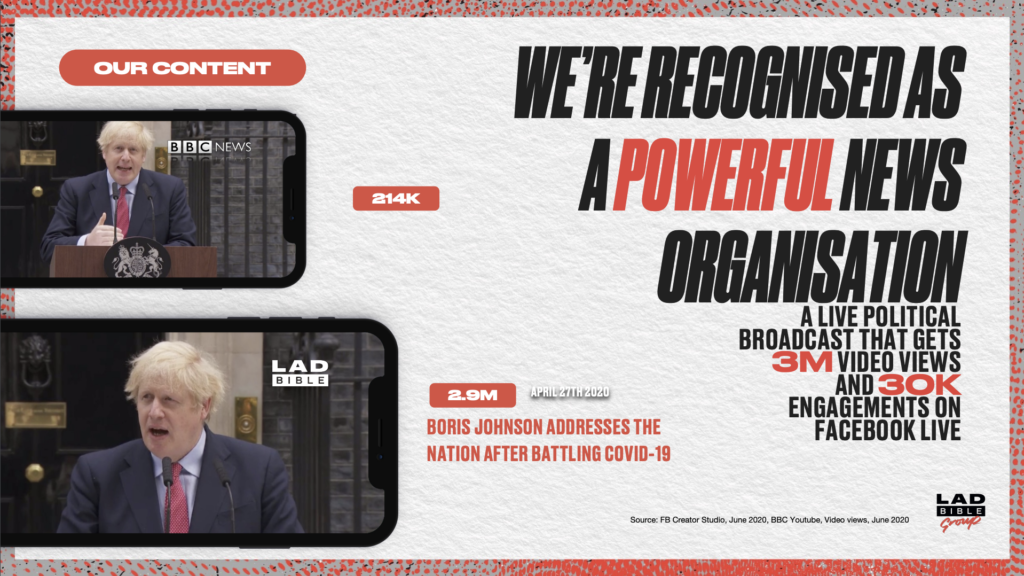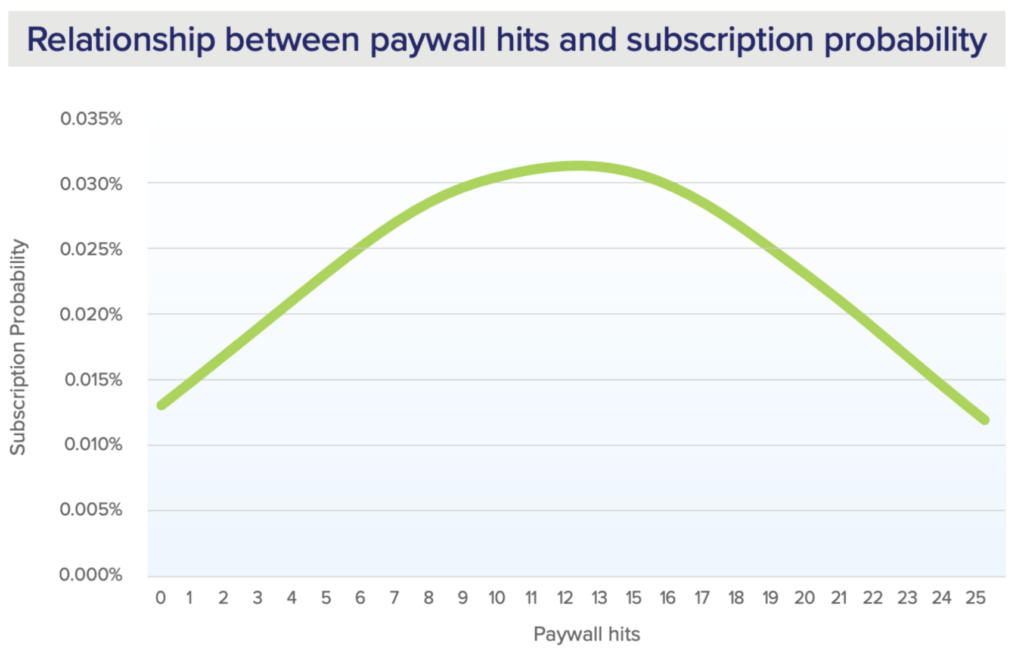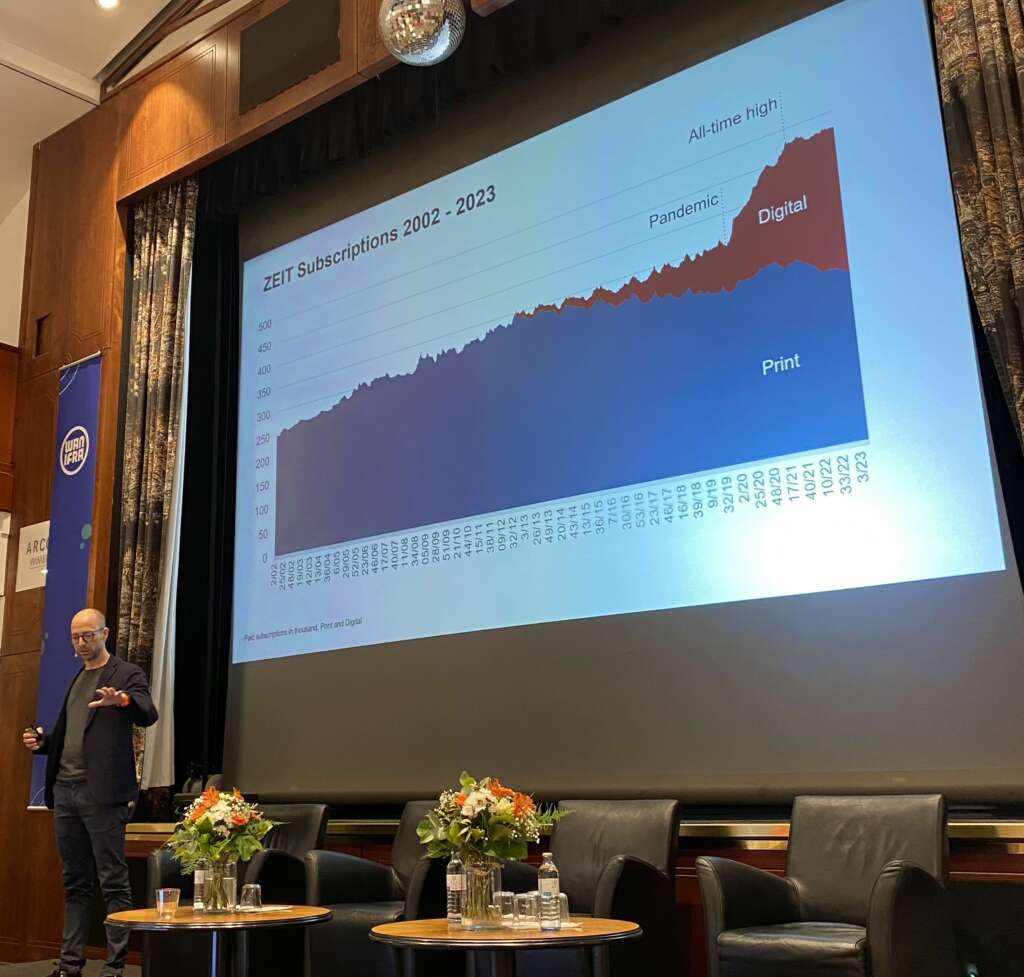

You're reading The Audiencers' newsletter #13, sent out on May 3rd, 2023. To receive future newsletters straight to your inbox every two weeks, sign up here.
In The Audiencers’ Newsletter #13:
- Overheard this week from LADbible Group
- Data on the relationship between paywall hits and subscription probability and what can you do with this information
- Hot-off-the-press insights from Die Zeit at Digital Media Europe: how Zeit online are working to retain their subscribers
- Sustainability for publishers means advertising AND subscription: the topic of diversification was on everyone’s mind at Google’s Local News event
- Recommendations to add to your reading list: from The Audiencers & friends
Overheard this week from LADbible group

“There’s this argument that young people don’t like news. Well, they do. They perhaps just don’t like it in the way you’re serving it to them. Or they don’t share the same traditional opinion that you have of what news actually is…
Just because it’s not what you would find on the front page of a traditional broadsheet publisher, for example, doesn’t mean it isn’t news. You have to go to where your audience is.” …as they proved in the number of users tuning in to the Covid-19 update in 2020 on LADbible vs on the BBC 👇

Simon Binns spoke at WAN-IFRA’s DME event in Vienna last week about LADbible Group’s success in reaching and engaging young audiences. Find an interview here.
“Increasing the number of times a reader hits a paywall makes them more likely to subscribe, but this trend eventually declines”
Albeit being 2 years old now, Mather Economic’s report reveals interesting insights into paywall visibility, a factor in subscriber conversions that many publishers are neglecting.

“Hitting the paywall boosts a reader’s propensity to subscribe, but after a peak, that propensity declines. For many publishers, propensity began to decline after 10 to 15 paywall hits, indicating the need for aggressive conversion tactics.”
With this knowledge, how can we optimize conversion rates for users hitting the paywall 10-15+ times?
Create a dedicated audience segment, building a dynamic experience adapted to their context…
- Varying the offers, e.g. a special starter discount to encourage conversion
- Adapted wording, perhaps an article count like The Guardian
- Present a registration wall to de-anonymize the user, increase engagement & collect data points to inform your strategy
We recently discussed other paywall visibility metrics that you should be tracking and how to make use of them to increase conversions – find the article here.
Hot-off-the-press insights from Digital Media Europe: Die Zeit & retention
We’ll soon be sharing a full article sharing lessons learnt from WAN-IFRA’s Digital Media Europe event in Vienna last week. But for now, here’s a bite-sized takeaway from Christian Roepke at Die Zeit
Like many publishers, despite seeing a steep increase in digital subscriptions since the pandemic, Zeit online has been facing the challenge of converting free trial users to paying subscribers, and retaining them in the long term.

So, what are Die Zeit doing to overcome this challenge?
> A culture of experimentation: constantly A/B testing new design, copy and user journeys, such as optimizing a footer bar promoting subscriptions, increasing conversion rates by 23%.
> Research has proven that app usage significantly increases engagement and retention, so they’ve put a lot of energy into encouraging trial subscribers to download the app (e.g. during the onboarding).
> Data also revealed that there’s a big drop in engagement after the first day of subscription, so the publisher launched their “First subscription day project” to orientate subscribers on their first day.
For instance, personalized first day experiences, sending confirmation & onboarding emails as well as a “5 tips to get started with subscription” page in the footer bar on the first article that a subscriber accesses.
Keep an eye out for our full article on WAN-IFRA’s event published in the coming week.
Sustainability means advertising AND subscription
I recently had the pleasure, and honor, of speaking at Google’s local news event last week on a panel alongside Daisy Donald and Jeremy Clifford of FT Strategies, and Steve Barron, of Highlands News and Media.
One of the biggest challenges brought up was the question of advertising vs subscription for digital revenue models. My argument: let’s stop talking about advertising vs subscription, it’s advertising AND subscription that will support sustainability for local news publishers.
TL;DR
- Diversifying revenue streams is the focus for digital publishers in 2023, and registration is a valuable tool for supporting both advertising and subscription models
- The reason for this is that logged users are highly more engaged than anonymous readers – they come back more frequently, consume more content, stay for longer and interact with your site thanks to the features they now have access to as a member, such as being able to read more articles, save content for later and share their opinion through commenting
- Metrics and content should therefore focus around increasing engagement and customer life-time value rather than being purely for generating traffic and bringing eyeballs on-page
- Ultimately, we need to accept that not all users are created equal – some will never subscribe, but can be monetized in other ways. Hence the value of dynamic models that adapt to the user’s profile and context
> Find the full article on The Audiencers
In-house content to read…
- New benchmark article: how 3 successful British publishers are onboarding subscribers
- Paywalled content: rethinking the icons that you use to mark your premium content, a brilliant article by Lars Jensen
- Ask the experts: what are the most valuable engagement metrics in a reader revenue model?
…and recommendations from elsewhere
- Der Spiegel uses data to predict long-term subscribers
- Congratulations to our friends over at What’s New In Publishing and Di5rupt for the recent acquisition – we’re excited for what’s to come!
- Paid content study: Willingness to pay for media subscriptions is increasing (originally in German)…
The central results:
84% of households have at least one paid media subscription – on average, 7 subscriptions are used per household.
Every household spends an average of €41 per month on media subscriptions – the readers of regional daily newspaper brands even spend €62.
With a share of 76%, paid video streaming services are the most widespread in households.
In order to save money, 19% would cut back on audio and streaming services, compared to only 9% for newspapers and magazines.
The Audiencers’ newsletter: from professionals to professionals
Sign up to our newsletter – real-life examples, expert points of view and inspirations from publishers around the world to help you do your job better. Sent every two weeks.


